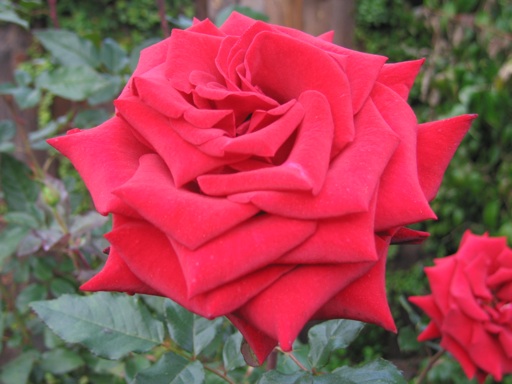
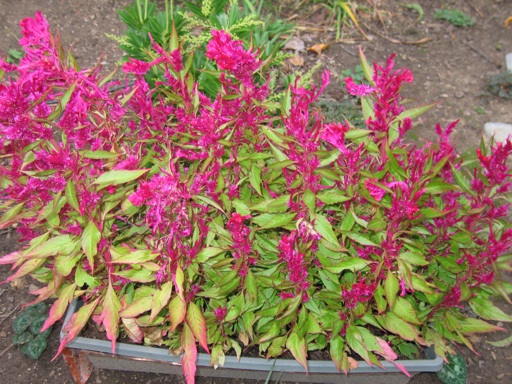
As the daylight hours dwindle in autumn, so do the blooms in our garden. But a few of our plants are still managing to put on a nice show of flowers. Some of our rose bushes are producing their last bloom of the year, including our black magic roses as shown in the first picture. I pruned off most of this season’s growth from this particular rose bush back in mid-August. In just two months, it grew back rapidly and produced another flush of flowers.
Last spring, we planted cockscomb flower seeds in a pot and in our raised bed vegetable garden. They grew better in the pot. It took them 5 months to grow to full size and begin to flower, which they began to do in September. They are still looking good and holding on to their red flowers (if you can call them flowers).
October 18 2009 | Cockscomb and Roses | Comments Off on What’s Still Blooming in Our Garden
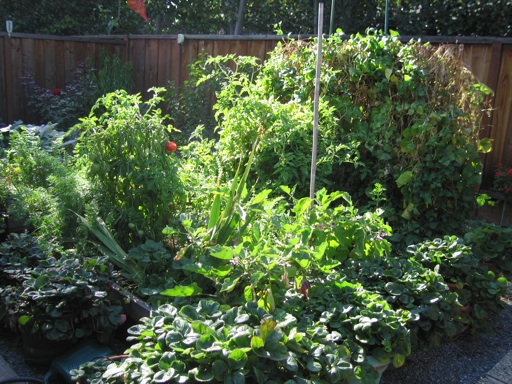
It may not be possible to produce 100% of one’s fruit and vegetable needs in a suburban backyard garden. But after my second season of growing a vegetable garden, I have been thinking about exactly how much our vegetable garden has reduced our food bill.
Below I have listed the approximate amount of produce we have grown this year in our vegetable garden and the cost to buy the equivalent amount of produce in a local grocery store. The prices that grocery stores charge for produce vary greatly from store to store, from region to region, and at different times of the year. The prices per pound of the various items of produce I have described below are approximate average prices that grocery stores in my area have charged this year.
This year, for example, our strawberries produced about a 1 pound of berries per week from mid-May through mid-August and about 0.25 pounds per week after that through the present. Strawberries typically cost at least $3 per pound in our area in the spring, summer, and fall. That’s at least $50 worth of strawberries.
We harvested at least 35 pounds of tomatoes this season. At a price of $2 per pound, that’s about $70 worth of tomatoes. We turned most of those tomatoes into a pizza sauce that we use on homemade pizza as well as in pasta dishes.
We have harvested and eaten about 14 pounds of green beans from late June until now. That doesn’t include the dried beans I harvested last week. At a price of $2.50 per pound, our plants have produced about $35 worth of fresh green beans.
We have grown about 30 carrots that weighed about 15 pounds. At $1.20 per pound, that’s about $18 worth of carrots. We harvested at least 20 zucchinis. At $2 per pound, that’s about $40 worth of zucchinis from our garden. We picked about 8 pounds of eggplants. At $3 per pound, that equals about $24 dollars worth of eggplants. We harvested about 10 pounds of onions that would have cost about $13 to purchase. We also harvested about $10 worth of bell and jalapeno peppers, about $10 worth of basil, about $10 worth of corn, about $5 worth of broccoli, and about $5 worth of spinach.
That equals a total of about $290 worth of produce from the vegetable garden we planted in our yard to replace a 10′ x 20′ lawn. I estimate that I spent about $120 to buy fertilizer, seeds, transplants, and other supplies to start and maintain our vegetable garden this year. It’s hard to estimate how much of our water bill comes from watering the vegetable garden, but a really rough estimate is about $25 from April through October.
Subtracting out the costs, our vegetable garden netted us about $145 dollars this year. That does not amount to a tremendous savings on our food bill. However, gardening is perhaps one of the few hobbies that saves a hobbyist money rather than costing the hobbyist money. Also, I figure that I can increase our yields next year by cutting out some of the plants that did not produce quality produce, like honeydew melons, and planting more of the plants that were easy to grow and inexpensive to plant by seed or transplant, like carrots and onions.
The yield from our pepper plants this year was disappointing compared to last year and prior years when we grew them in pots. This year, our peppers got crowded by the nearby tomatoes and beans. I think I can get them to produce more next year by giving them more room to grow and by fertilizing them more. Optimistically, I think that our vegetable garden, which consists of a 6′ x 7′ raised bed, a 6′ x 8′ raised bed, and a bunch of pots, has the potential to produce $400-$500 dollars worth of produce in a good year at today’s prices.
October 11 2009 | Vegetables | Comments Off on How Economical Is a Vegetable Garden?
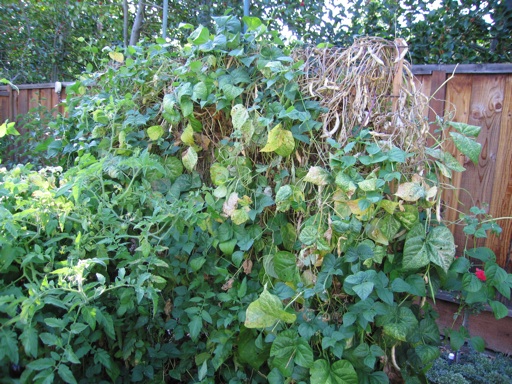
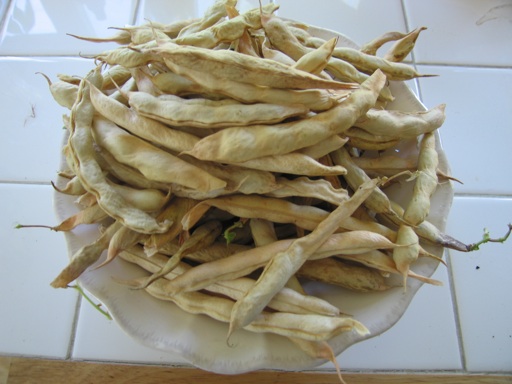
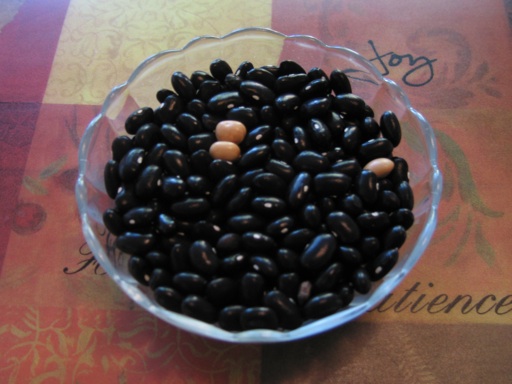
We have been harvesting beans from our pole bean plants since late June. During the summer, they were producing more beans than we wanted to eat, so I didn’t harvest them all. They are starting to wind down their production of beans now, but there are many bean pods left on the vines that have dried up.
Today, I spent about an hour harvesting the dried bean pods and removing the seeds from them. Each fall, I save bean seeds from the dried up beans pods to plant as next year’s crop of pole beans. I place the bean seeds in a zip-locked bag marked with the date I harvested them. Then, I put the bag in a drawer in our kitchen for storage until next spring.
Beans are the only seeds I harvest from our vegetable garden to re-plant for next year. Bean seeds are very easy to harvest, because they are large seeds, and they dry within the pods while they are still on the vine. Other types of vegetable seeds are much smaller and are more of a challenge to pick and dry.
I always make sure to harvest the seeds from bean pods that are completely dried up. The dried up pods crumble in my hands when I break them open. I have noticed that if the bean seeds inside are not completely dry and hard, mildew may start to grow on them while they are in storage.
This year I planted mainly Romano (Italian) beans and some Blue Lake pole beans. The black beans shown in the third picture above are the Romano beans. These types of beans are usually grown for harvest as green beans. But I think the dried black bean seeds from the Romano bean plants can also be cooked and eaten. We have too many dried bean seeds to plant next year in our relatively small vegetable garden, so I am going to try cooking some of them and using them in Mexican dishes.
October 04 2009 | Beans | Comments Off on Harvesting Dried Bean Seeds





